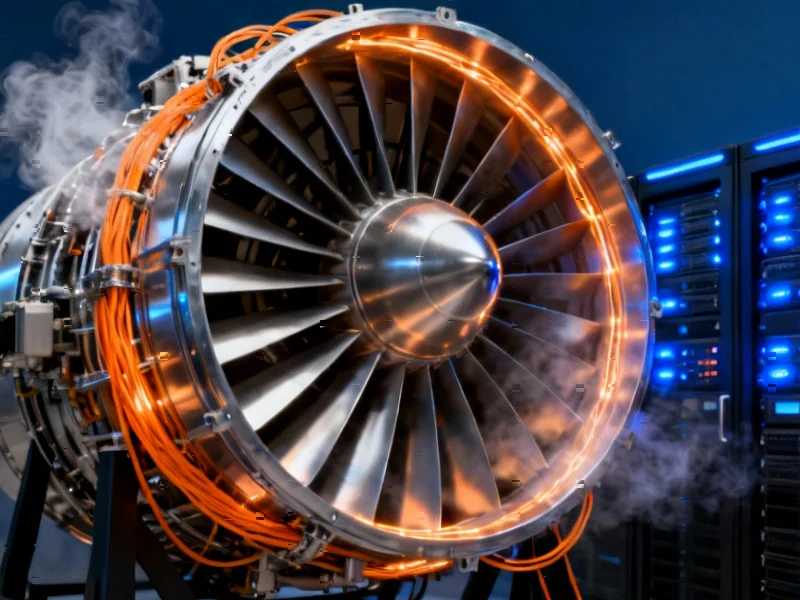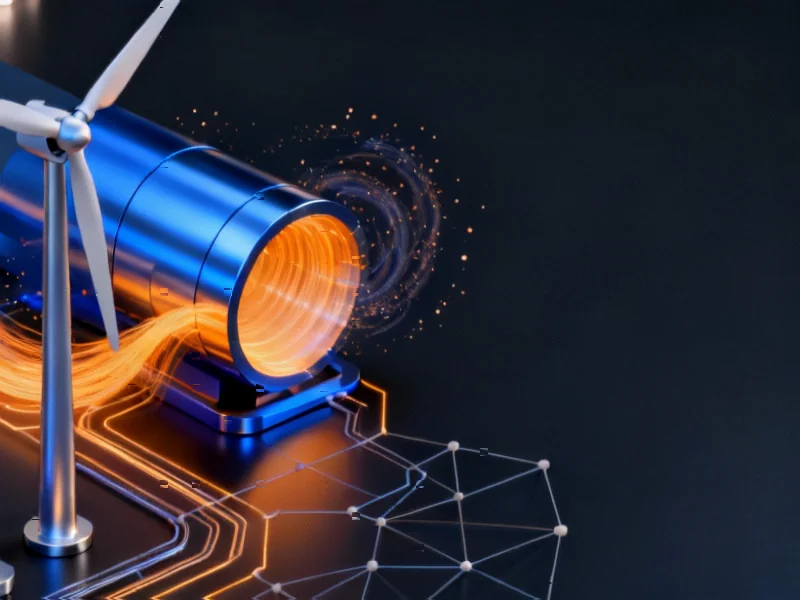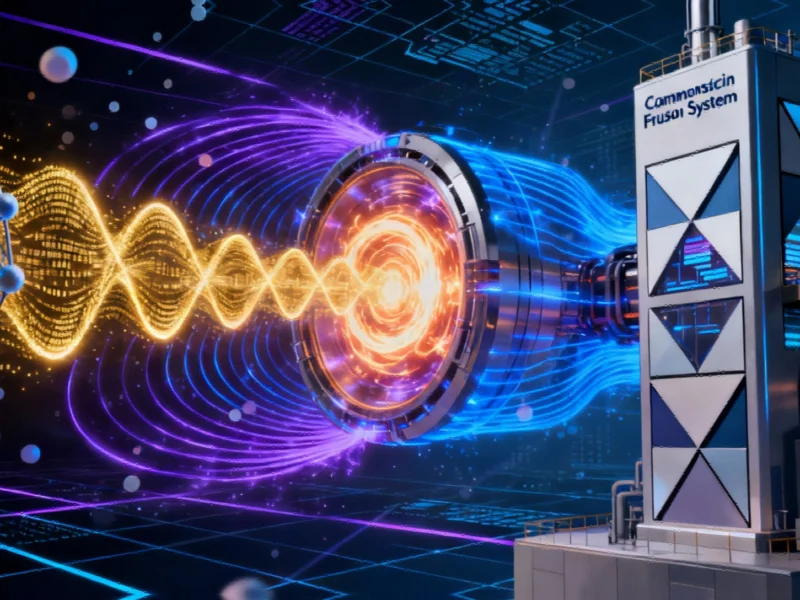Innovative Power Strategy Addresses Critical Energy Shortages
As data center operators grapple with unprecedented power demands and extended grid connection timelines, an innovative solution is taking flight—literally. ProEnergy, a Missouri-based energy solutions provider, is transforming retired jet engines into powerful temporary generators that can bridge the critical gap between data center construction and permanent grid connectivity.
Table of Contents
From Flight to Power Generation
The company‘s approach centers on repurposing General Electric’s CF6-80C2 jet engine cores, previously used in commercial aircraft including Boeing 747-400s, 767s, and Airbus A300/A310 models. Through strategic modification and enhancement, these aircraft engines are being reborn as the PE6000 gas turbines—capable of delivering substantial power to energy-hungry data facilities.
“We have sold 21 gas turbines for two data center projects amounting to more than 1GW,” revealed Landon Tessmer, VP of commercial operations at ProEnergy. “Both projects are expected to provide bridging power for five to seven years, which is when they expect to have grid interconnection and no longer need permanent behind-the-meter generation.”
Engineering Transformation Process
The conversion from jet engine to power generator involves several critical modifications. Engineers expand the turbine section to transform engine thrust into usable shaft power, add structural supports for stable installation on concrete decks or steel frames, and implement new control systems. The result is a power unit capable of supplying 48MW of capacity—significant output for temporary data center operations.
ProEnergy has standardized its approach around two-turbine power blocks that include not only the modified turbines and generators but also supporting systems such as air cooling units for optimal performance in warm conditions and selective catalytic reduction systems to minimize environmental impact., according to recent innovations
Market Dynamics Driving Innovation
The move toward repurposed jet engines reflects broader challenges in the power generation equipment market. With only three major manufacturers—GE Vernova, Siemens, and Mitsubishi Heavy Industries—dominating the global turbine supply, delivery backlogs have stretched beyond 2029 due to surging demand from AI data centers and other energy-intensive applications., as related article
“The constrained nature of the gas turbine market drove our decision to repurpose jet engines as mobile generators,” Tessmer explained. “While traditional manufacturers are quoting deliveries into the next decade, a PE6000 from ProEnergy can be delivered in 2027.”
Sustainable Supply Chain Advantages
ProEnergy’s strategy leverages an abundant resource: approximately 1,000 CF6-80C2 aircraft engines expected to be retired over the coming decade. This creates a sustainable supply chain that addresses both equipment scarcity and lifecycle management of aviation assets., according to related news
The company’s focused approach on a single engine model—the CF6-80C2—enables engineering efficiency and maintenance optimization, keeping costs manageable while ensuring reliability for critical data center operations.
Lifecycle Management and Future Applications
Perhaps most strategically, these repurposed turbines serve multiple roles throughout their operational life. After providing primary power during the initial years of data center operation, the units transition to backup power applications, can be sold to local utilities, or used to supplement regional grid capacity.
This multi-phase utilization model represents a significant advancement in power infrastructure planning, offering data center operators flexibility while maximizing return on energy infrastructure investments.
Broader Industry Trend
ProEnergy’s innovation reflects a growing trend toward off-grid natural gas solutions across the data center industry. Recent months have seen major commitments, including AI data center developer Crusoe ordering up to 1GW of GE Vernova natural gas turbines and Siemens signing a letter of intent to supply Fermi America with up to 1.1GW of natural gas generating capacity for its Texas mega campus.
As data center power requirements continue to escalate amid AI expansion and digital transformation, creative solutions like jet engine repurposing demonstrate how industries can collaborate to address critical infrastructure challenges while maintaining operational flexibility and sustainability objectives.
Related Articles You May Find Interesting
- Tesla’s Earnings Report Pivots Focus From Electric Vehicles to AI Ambitions
- Global AI Governance Crossroads: How the Superintelligence Debate Could Reshape
- UK Regulators Challenge Tech Titans: App Store Dominance Under Scrutiny
- Saudi Telecom Giant Salam to Power Medusa Subsea Cable’s Middle East Expansion
- UK Regulators Push for Major App Store Overhauls at Apple and Google
This article aggregates information from publicly available sources. All trademarks and copyrights belong to their respective owners.
Note: Featured image is for illustrative purposes only and does not represent any specific product, service, or entity mentioned in this article.



